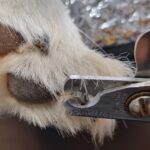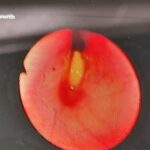Brachycephalic airway syndrome (also called brachycephalic obstructive airway syndrome, brachycephalic respiratory syndrome or just brachycephalic syndrome) is a disease caused by a collection of several upper airway abnormalities that are common to dogs bred to have flat faces. The word “brachycephalic” comes from the Greek words brachy (“short”) and cephalic (“head”) and is used to refer to dog breeds such as pugs, French bulldogs, boxers, British bulldogs, Cavalier spaniels and many other breeds with short faces.
There are many complications that come from breeding dogs to have flattened faces but BAS is one of the most dangerous consequences. There are four major abnormalities that result from this face type:
- Narrowed nostril openings (“stenotic nares”)
Many flat-faced dogs have nostril openings that are much narrower than an average dog’s. This restricts the amount of air a dog can breathe in through its nose; as dogs that aren’t panting breathe primarily through their nose this can affect how much oxygen gets down to their lungs. Narrow airways also require more effort to breath in which creates more negative pressure at the back of the throat, which in turn leads to further narrowing of the airways.
- Abnormally long soft palate
The soft palate is a long flap of tissue that closes off the airways while an animal is swallowing; this protects the nose and trachea (windpipe) from food or water being accidentally inhaled. Flat-faced dogs often have soft palates that are longer than normal; this prevents it moving out of the way during breathing, and can cause loud noisy breathing and blockage of the airway. Many dogs with elongated soft palates also make snorting noises and often snore very loudly.
- Hypoplastic trachea
Some dogs with BAS also have tracheas (windpipes) that are much thinner than a normal dog’s. This also leads to a restriction in how much air is able to flow down from the nose into the lungs.
- Everted laryngeal saccules
The laryngeal saccules are small pouches nestled just inside the dog’s larynx (similar to a human voice box). The function of laryngeal saccules is poorly understood, but in flat-faced dogs these pouches may get turned inside out and protrude into the opening of the windpipe. This restricts the opening and causes noisy breathing and blockage of the windpipe.
Treatment of these abnormalities is crucial to helping our flat-faced dogs breathe easier. Surgical intervention can help correct these changes and reduce the signs of Brachycephalic AIrway Syndrome
- Surgical widening of narrowed nostrils
- This simple procedure can sometimes double the amount of air breathed in through the nose.
- It is a procedure that can be routinely performed at a young age between 6-12months of age.
- Is recommended for all bracycephalic dogs.
- Trimming of excessive length of the soft palate
- Often done if severe breathing difficulties arise
- Removal of everted laryngeal saccules
- Often performed during other procedures.
There is no treatment for a hypoplastic trachea.
Preventing problems associated with BAS is important and surgery is only the first step for flat-faced breeds with breathing issues. Keeping these dogs cool in hot weather, avoiding stressful situations and maintaining a healthy body weight are all important to keep these types of dog safe.





